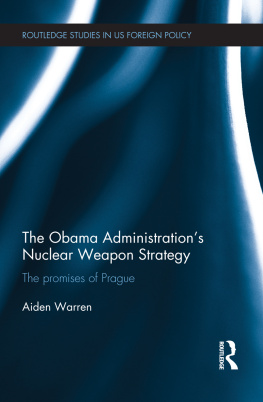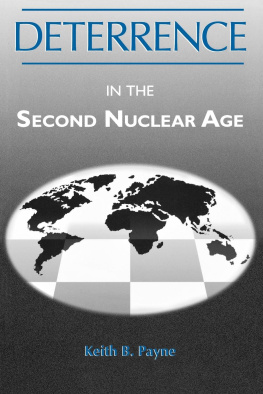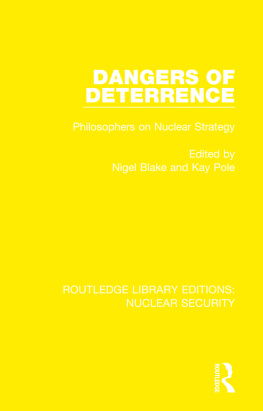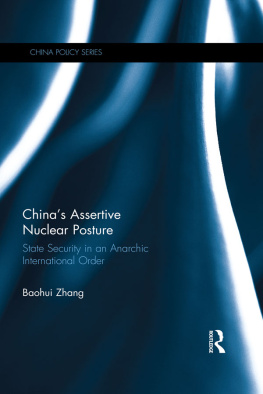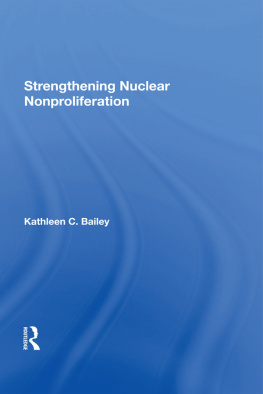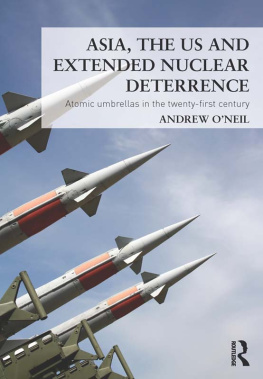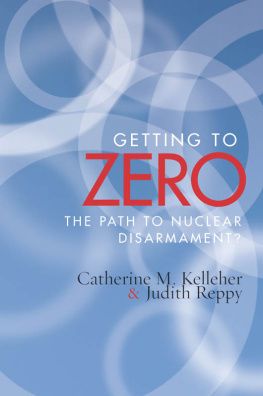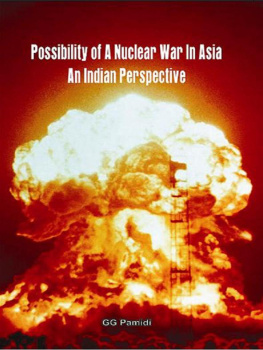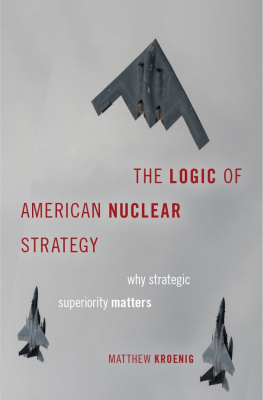The International Institute for Strategic Studies
Arundel House | 1315 Arundel Street | Temple Place | London | WC2R 3DX | UK
ADELPHI PAPER 383
First published October 2006
by Routledge
4 Park Square, Milton Park, Abingdon, Oxon, OX14 4RN
for The International Institute for Strategic Studies
Arundel House, 13-15 Arundel Street, Temple Place, London, WC2R3DX, UK
www.iiss.org
Simultaneously published in the USA and Canada by Routledge
270 Madison Ave., New York, NY 10016
Routledge is an imprint of Taylor & Francis, an Informa business
2006 The International Institute for Strategic Studies
DIRECTOR-GENERAL AND CHIEF EXECUTIVE John Chipman
EDITOR Tim Huxley
MANAGER FOR EDITORIAL SERVICES Ayse Abdullah
ASSISTANT EDITOR Jessica Delaney
PRODUCTION Jesse Simon
COVER IMAGE Stone Collection/Getty Images
PRINTED AND BOUND IN GREAT BRITAIN BY Bell & Bain Ltd, Thornliebank, Glasgow
All rights reserved. No part of this book may be reprinted or reproduced or utilised in any form or by any electronic, mechanical, or other means, now known or hereafter invented, including photocopying and recording, or in any information storage or retrieval system, without permission in writing from the publisher.
British Library Cataloguing in Publication Data
A catalogue record for this book is available from the British Library
Library of Congress Cataloguing in Publication Data
ISBN 978-0-415-42734-0
ISSN 0567-932X
ABL Airborne Laser
ABM Anti-ballistic missile
ABMDS Aegis Ballistic Missile Defense System
ACI Advanced Concepts Initiative
ACM Advanced cruise missile
ADW Agent-defeat weapons
AFSP Air Force Space Command
ALCM Air-launched cruise missile
BMD Ballistic-missile defence
BMDO Ballistic Missile Defense Organization
BUR Bottom-Up Review
C2I Command, control and intelligence
C3 Command, control and communications
CB Chemical and biological
CEP Circular error probable
CONPLAN Concept Plan
CRS Congressional Research Service
CTM Conventional Trident Modification
DCI Defense Counterproliferation Initiative
DGZ Designated Ground Zero
DoD Department of Defense
DPG Defense Planning Guidance
EPW Earth-penetrator weapons
GBI Ground-based interceptor
GMD Ground-based Midcourse Defence
GPALS Global Protection Against Limited Strikes
HDBT Hardened and deeply buried target
ICBM Intercontinental ballistic missile
ISR Intelligence, surveillance and reconnaissance
JCS Joint Chiefs of Staff
JSCP Joint Strategic Capabilities Plan
JSOP Joint Strategic Objectives Plan
LEP Life Extension Program
LOW Launch-on-warning
LUA Launch-under-attack
MAD Mutual assured deterrence
MARV Manoeuvrable re-entry vehicle
MEADS Medium Extended Air Defense System
MIRV Multiple independently targetable re-entry vehicle
MPF Modern Pit Facility
MRBM Medium-range ballistic missile
MRC Major regional conflict
MRT Mobile and relocatable targets
MX Missile-experimental
NBC Nuclear, biological and chemical
NIE National Intelligence Estimate
NMD National missile defence
NNSA National Nuclear Security Administration
NPR Nuclear Posture Review
NPT Non-Proliferation Treaty
NSC National Security Council
NSDM National Security Decision Memorandum
NSPD National Security Presidential Directive
NSS National Security Strategy
NTS Nevada Test Site
NTW Navy Theater Wide
NUWEP Nuclear Weapons Employment Policy
NWC Nuclear Weapons Council
NWPTF Nuclear Weapons Project Task Force
OPLAN Operations Plan
PAC Patriot Advanced Capability
PDD Presidential Decision Directive
PLYWD Precision Low-Yield Weapons Design
QDR Quadrennial Defense Review
RNEP Robust Nuclear Earth Penetrator
RRW Reliable Replacement Warhead
RV Re-entry vehicle
SAC Strategic Air Command
SAM Surface-to-air missile
SBL Space-based Laser
SDI Strategic Defense Initiative
SIOP Single Integrated Operations Plan
SLBM Sea-launched ballistic missile
SMD Sea-based Midcourse Defense
SORT Strategic Offensive Reduction Treaty
SSBN Ballistic-missile submarine
SSP Stockpile Stewardship Program
STRATCOM Strategic Command
STSS Space Tracking and Surveillance System
SWPS Strategic War-Planning System
THAAD Theater High Altitude Area Defense
TMD Theatre missile defence
USAF United States Air Force
WMD Weapons of mass destruction
The administration of George W. Bush has attempted to implement a number of significant revisions to American nuclear strategy. Perhaps the most controversial has been the proposal for new nuclear capabilities designed for specialised counter-force missions against hardened underground bunkers, weapons of mass destruction (WMD) and other strategic military assets. Many are found among those regional adversaries that have been colloquially termed rogue states and perhaps better called states with rogue regimes and, not surprisingly, these states have been incorporated as critical targets in the increasingly prompt and flexible US nuclear-war plans. These nuclear-weapon proposals have faced criticism from many quarters and many specific recommendations have been defeated in Congress. Yet it remains to be seen whether the transformation of the American nuclear arsenal has indeed stalled in the long term. After all, the military utility of using nuclear bunker-busters as a tool of counter-proliferation, ostensibly to make more credible American efforts to reinforce deterrence, has become the new raison dtre for the nuclear arsenal. The wisdom of adopting such a rationale, which appears to ignore the existential threats posed by the large arsenal of Russian and other nuclear stockpiles, can, therefore, be brought into question.
But the current process of nuclear transformation goes beyond the dream of bunker-busters, expanded targeting options and other forms of nuclear counter-force modernisation; it threatens to contribute to the notion that nuclear weapons can be equated with conventional weapons. The late Hans Morgenthau aptly termed such a characterisation the conventionalisation of nuclear weapons. A less noticed but equally important chapter of this story is the continuing modernisation of the traditional nuclear triad', consisting of intercontinental ballistic missiles (ICBMs), sea-launched ballistic missiles (SLBMs) and a fleet of nuclear-armed intercontinental bombers. Indeed, the modernisation of the traditional strategic arsenal will not only give these legacy nuclear systems an extended service life, but will also significantly expand the hard-target-kill capabilities of these systems against a number of traditional counter-force targets not only among regional adversaries or nascent nuclear powers, but more importantly, against such established (and potentially rival) major powers as Russia and China. Strategic force modernisation is taking place in the context of force reductions, based on the USRussian agreement in the Moscow Treaty on Strategic Offensive Reductions (SORT) of May 2002. It is, however, questionable whether these reductions will indeed result in strategic nuclear stability, given the ongoing drive for qualitative improvments in the American nuclear arsenal.


